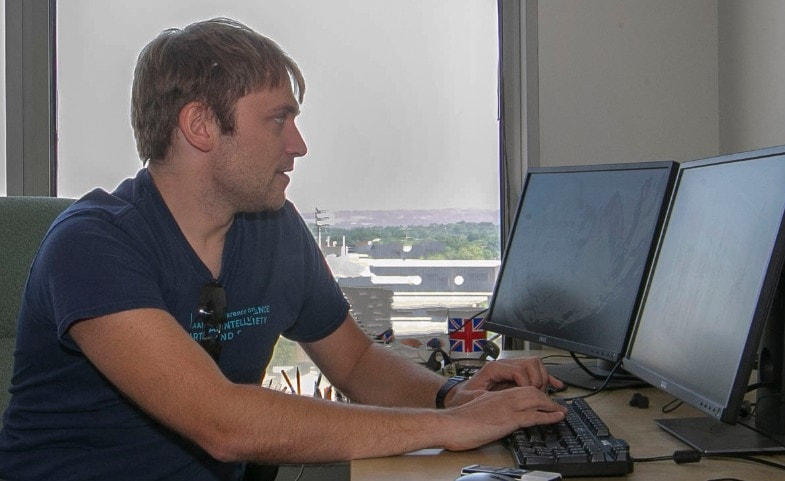Dr Dieter Vanderelst
Assistant Professor
University of Cincinnati Joint appointment in the departments of
Biological Sciences Electrical Engineering & Computing Systems Mechanical & Materials Engineering Research aims
The echolocation system of bats is, in many ways, a limited sense. It has a low update rate, a small field of view, and a limited temporal resolution. Nevertheless, echolocating bats can fly swiftly through vegetation, navigate changing environments, recognize objects and forage on the wing. Despite intense efforts over the past 50 years, the sensorimotor algorithms underlying bat sonar remain only partly understood.
I want to unravel how, notwithstanding the limitations of their sensory system, bats can deal with the challenges that result from living in complex and changing environments. In other words, I want to know how bats circumvent the limitations of their sonar system. To this end, I model echolocation based navigation, flight control & foraging in bats. In my research, I use simulation methods, artificial sonar systems, and robots to study the sensorimotor loops underlying bat biosonar. I have also developed methods for gathering echo data in bat habitats to investigate what different environments sound like for echolocating bats, and how this can be used to navigate. True to my multidisciplinary background, my research draws on insights and methods from cognitive science, biology & engineering. Besides bats and echolocation, my interests include bio-inspired artificial intelligence and models of cognitive functions both in humans and in animals. |
Our research on the web
Biology meets engineering: an NSF-funded program to increase students' interest in STEM
Video about our Biology meets Engineering program for high school students. See here for more information and to apply.
|
